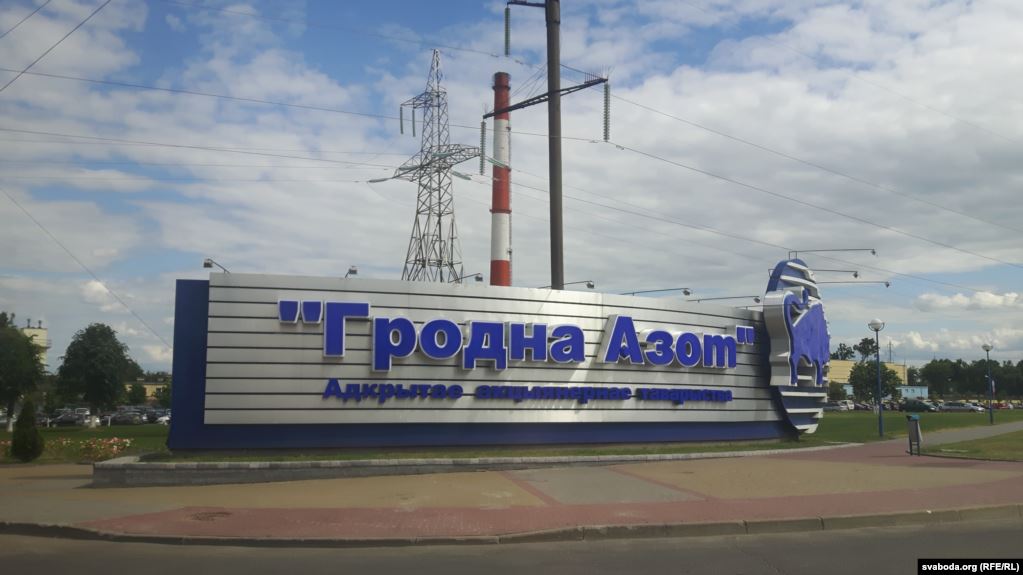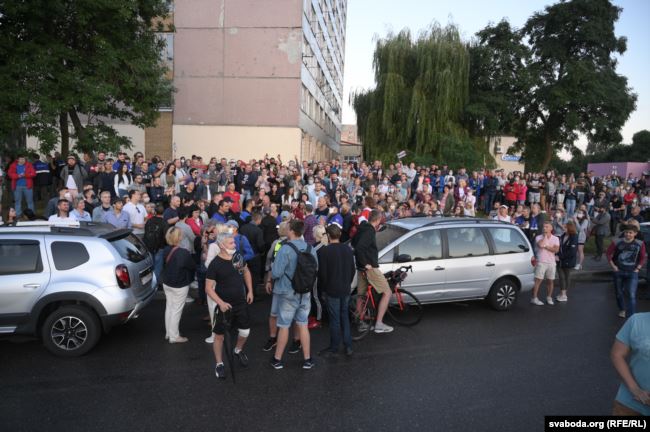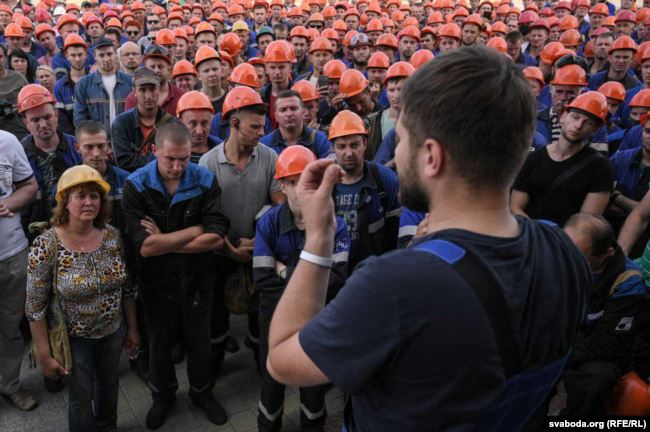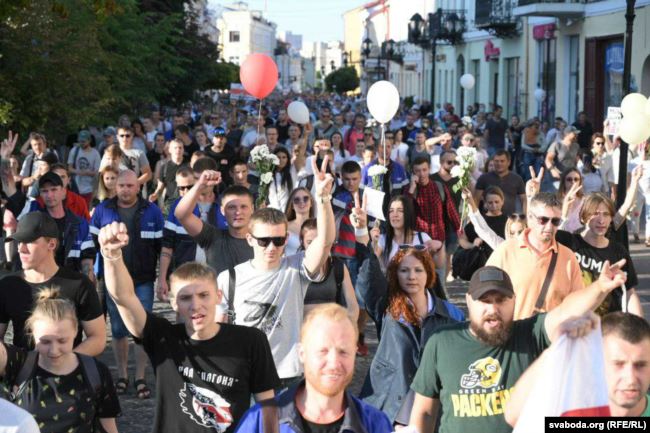29 September 2020, 14:35 | Radio Liberty

We have investigated how the protests are developing at the biggest chemical plant in Hrodna
Around 70 employees of “Hrodna Azot” wrote their letters of resignation, but have not submitted them yet. In such a way they reacted to their colleague’s arrest and the trials which are about to begin. If they are dismissed, at least two facilities will stop their operations.
What sparked the protests?
During the protest which took place on the day of Lukashenko’s unannounced inauguration on 23 September, several workers of “Hrodna Azot” were detained. One of them, Ihar Rubtsevich, was sentenced to 5 days of administrative detention because he had been detained before. This was the first detention case for partaking in protests at the Belarusian chemical industry giant. Rubtsevich was released 28 September.
“Seventeen colleagues were greeting him like a hero,” says the leader of “Hrodna Azot” Strike Committee Yury Ravavy, who currently resides in Warsaw.

Source: Radio Liberty (RFE/RL)
Earlier, on the 25 August, a group of “Hrodna Azot” employees were detained on their way from work to the city center. A group of about 30 men were kept at the police station for several hours. About five hundred of Hrodna residents came to the walls of the detention centre to support them; the “Hrodna Azot” management also arrived. Everyone was released the same evening, but the reports had been filed on their participation in an unauthorised assembly. Their trials are to take place 30 September.

Source: Radio Liberty (RFE/RL)
Resignation letters, work refusals, Italian strike
In response to that, the “Hrodna Azot” employees have been preparing their resignation letters, but they have not submitted them to the management yet. First of all these are “Ammonia-3” tech specialists who work shifts. Around 80 people work in this facility.
Before that one of the shifts had refused to work at all in a protest. The plant CEO Ihar Babyr and the chief engineer Viktar Mikhnevich went to talk to them. Eventually the shift agreed to get back to work.
Currently the “Ammonia-4” facility is undergoing planned reparations, although they were supposed to start in summer. Some of “Hrodna Azot” employees reckon the reason the reparations were postponed is that the plant management seriously fears the workers would refuse to launch the facility equipment once the reparations are done. At the moment “Ammonia-4” operations are rather slow. The situation pretty much resembles the Italian strike – the employees finish their shift right on time, with no more working overtime or weekends, which is totally legal.
“The workers are showing to the management they will not make money for them,” says Andrei Khanevich, the leader of the independent “Hrodna Azot” trade union.
Is it that simple to dismiss them and will the plant keep operating?
“Ammonia-3” and “Ammonia-4” are one of the main production facilities of “Hrodna Azot”. They are linked with “Сarbamid-3” and “Carbamid-4” respectively. If those who wrote resignation letters are actually fired, then with such a massive staff shortage, the “Ammonia-3” facility will not be able to operate as it must be controlled 24\7.
As Andrei Khanevich explained, there are few specialists in this sphere. It would take half a year to train one.
The whole plant, but for the “Khimvolokno” plant which is a part of the company, employs around 7 thousand people. About fifteen hundred work shifts.
“These are the people who actually make money. If there are no people, the facilities will stop working. They cannot be replaced or substituted. These are the people who produce”, explains Khanevich.

Source: Radio Liberty (RFE/RL)
The plant independent trade union tried to convince the workers not to write letters of resignation.
“Because the situation is likely to end up a little bit differently. Some of the most active ones will have their resignation signed, while the others will be told, ‘You have the contract, so go back to work’, and that’s how it all will die down”, says the independent trade union leader.
What risks might the workers’ reaction pose?
Yury Ravavy explains the Hrodna employees are not planning to shutdown facility operations urgently and dangerously. The main goal is to stop the pressure on their colleagues and the facility head who supports them.
“There are no threats to the environment or the equipment”, claims the strike committee leader.
“We all live here, in our town, we have families here. Do you think we can risk their safety? Of course, we cannot. There are professionals working here. We are talking about the agreed operation suspension here only,” says another plant employee.
Yury Ravavy is sure that if the workers are decisively intending to persist with the protest, this will lead to a safe “Ammonia-3” facility suspension in a month. It will be the order of the management itself.
What was happening at “Hrodna Azot” after the elections?
The employees of the biggest chemical plant “Hrodna Azot” were one of the first who expressed their determination to strike. Their demands included the resignation of Alexander Lukashenko, new elections, the release of political prisoners and the end of violence. The city administration tried to negotiate, so did Uladzimir Karanik, the new chairman of the regional executive committee.

Source: Radio Liberty (RFE/RL)
The enterprise management forbade the workers to strike. Due to safety concerns the strike committee leader Yury Ravavy left for Poland. Several employees are known to have resigned “by mutual” agreement.
The employees of “Hrodna Azot” are continuing to partake in street actions. The highest number of workers who took part in one of the first protests reached about one thousand people. The plant management banned the protesters from leaving the enterprise premises wearing the company uniform.
“Hrodna Azot” operations cannot be stopped at once due to its highly complex technological processes. This is very dangerous. Its gradual shutdown can take approximately a month. The same period of time will be required to restart the facilities.
For the last couple of weeks, the equipment in “Ammonia-3” (which was under annual maintenance this summer) and “Ammonia-4” facilities has repeatedly broken down. On several occasions white-red-white flags have been hoisted over the “Hrodna Azot” plant.
The materials provided by BelaPAN were used to prepare the article.